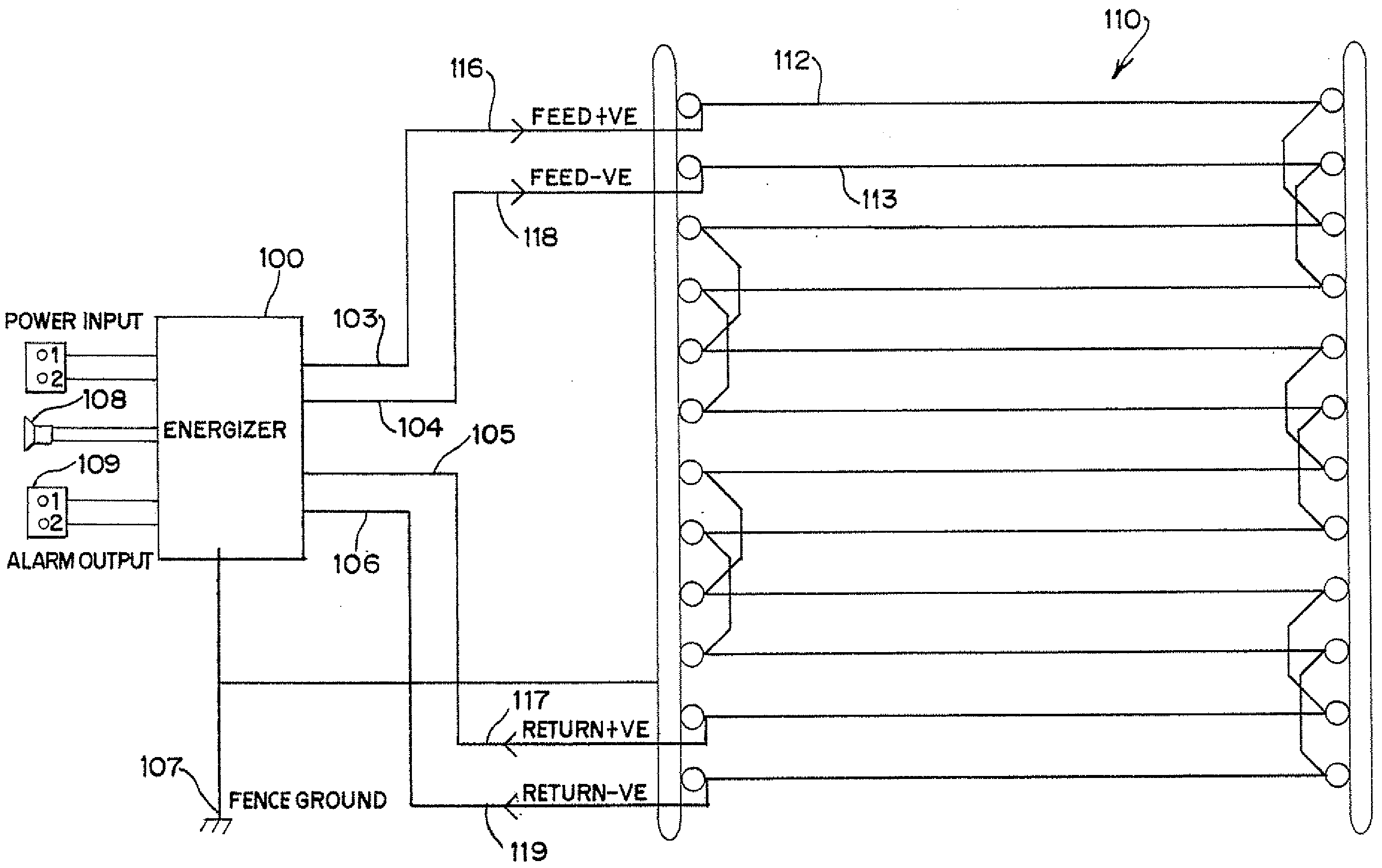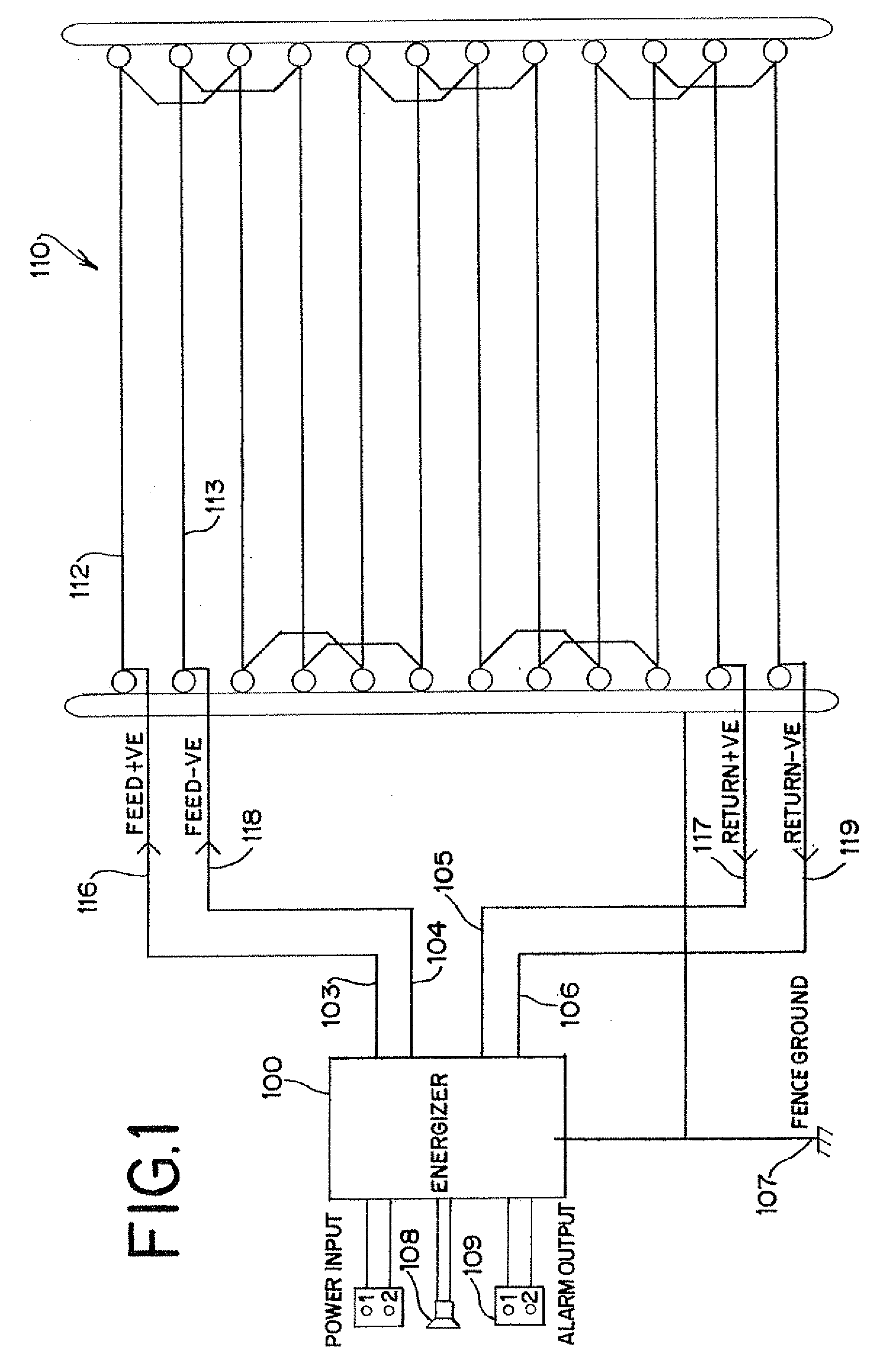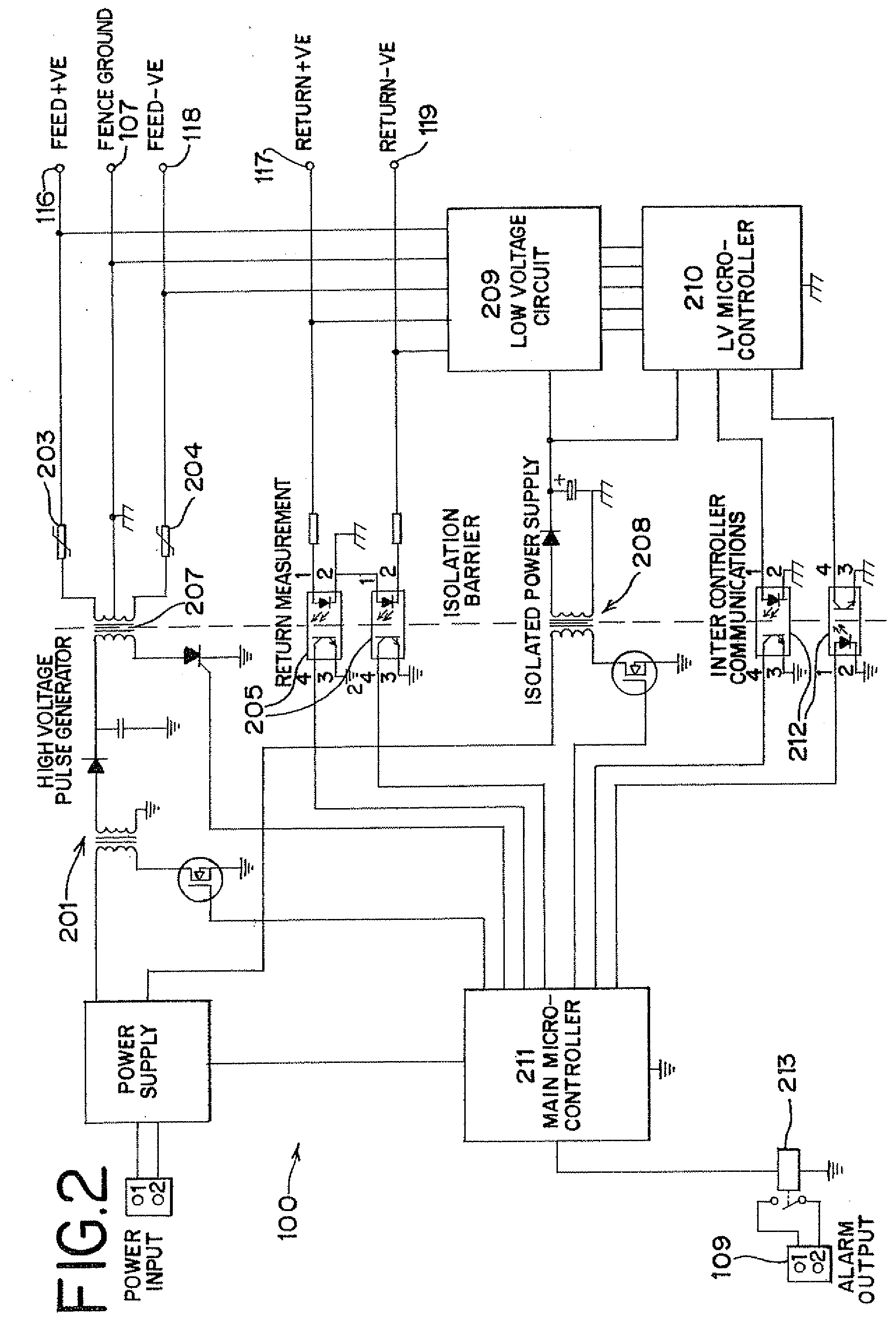Intrusion detection system for electric fences
a detection system and electric fence technology, applied in the field of intrusion detection systems, can solve the problems of difficult to gain access to the protected area without contacting the wires, detection is even slower, and the conductor of electric fences can be manipulated
- Summary
- Abstract
- Description
- Claims
- Application Information
AI Technical Summary
Benefits of technology
Problems solved by technology
Method used
Image
Examples
Embodiment Construction
[0031]A diagrammatic view of a security electric fence, including a circuit schematic diagram, according to the preferred embodiment of the present invention is depicted in FIG. 1. An energizer 100 includes output terminals 103-106 to conduct both high voltage signals and low voltage signals onto the electric fence wires. The fence 110 contains two sets of live wires 112 and 113. A first “positive” channel runs from the positive feed terminal 116 to the fence 110, then down the fence 110 in an alternating pattern with the wires 112 to negative feed terminal 117. The positive wires terminate back to the positive return terminal 105. In similar fashion, A first “negative” channel runs from the negative feed terminal 118 to the fence 110, then down the fence 110 in an alternating pattern with the wires 113 to negative feed terminal 119. The negative wires terminate back to the negative return terminal 106. The energizer 100 also has a fence ground connection 107.
[0032]When the energize...
PUM
 Login to View More
Login to View More Abstract
Description
Claims
Application Information
 Login to View More
Login to View More - R&D
- Intellectual Property
- Life Sciences
- Materials
- Tech Scout
- Unparalleled Data Quality
- Higher Quality Content
- 60% Fewer Hallucinations
Browse by: Latest US Patents, China's latest patents, Technical Efficacy Thesaurus, Application Domain, Technology Topic, Popular Technical Reports.
© 2025 PatSnap. All rights reserved.Legal|Privacy policy|Modern Slavery Act Transparency Statement|Sitemap|About US| Contact US: help@patsnap.com



